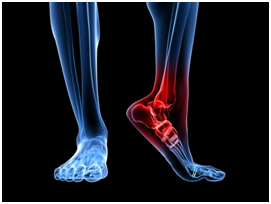 Foot and Ankle Pain can be caused by a number of reasons including; sprains, overuse injuries, changes to the biomechanics of your foot, and osteoarthritis (wear and tear).
Foot and Ankle Pain can be caused by a number of reasons including; sprains, overuse injuries, changes to the biomechanics of your foot, and osteoarthritis (wear and tear).
Most foot and ankle pain can be eased by simple over the counter pain relief, modifying your activities, and wearing good supportive footwear. However, the following printable exercise leaflets may also help, depending on your symptoms.
If your pain does not settle in 6 weeks, you may need to seek further advice and can refer to physiotherapy through the self referral method.
It is important to contact your medical practice if:
- You are unable to put weight on your foot or ankle, making it difficult to walk.
- Your ankle is hot, red and swollen as this may be a sign of infection
- You have swollen or stiff feet.
- You experience burning pain or numbness.
- You are diabetic.
Ankle Sprain
If you have sprained your ankle, it is important to initially rest, use ice, elevate the foot, and keep it moving as much as you can. This printable leaflet gives further advice and the exercises that we recommend you should do following an ankle sprain. NHS Borders Ankle Sprain leaflet
Achilles Tendinopathy
What is it?
Achilles tendinopathy is a condition that causes pain, swelling and stiffness of the Achilles tendon that joins your heel bone to your calf muscles.
Common Symptoms
These are the most common symptoms people develop.
- stiffness and pain in the Achilles first thing in the morning which eases after a few minutes of walking
- tenderness in the Achilles and there may be a thickening or lump you can feel
- pain tends to be variable in nature, it is often not so bad during exercises but worse after rest.
This leaflet contains more information about Achilles tendinopathy. advice on management and exercises that are recommended to help.
Posterior Tibial Tendon Dysfunction (PTTD)
What is PTTD?
Posterior Tibial Tendon Dysfunction is one of the most common problems in the foot and ankle.
The tibialis posterior is a muscle in the lower leg. The tendon from this muscle runs behind the inside bone on the ankle, attaching under the sole of the foot and helps to hold the arch of the foot up.
Sometimes the tendon becomes stretched and inflamed due to overuse or injury and this condition can be called Tibialis Posterior Tendon Dysfunction, Tibialis Posterior Insufficiency or Adult Acquired Flat Foot.
Symptoms of PTTD may include:
- pain and swelling along the ankle or inside of the foot. This pain may increase with activity, including standing or walking.
- pain when standing on toes
- ankle rolls inwards
- doifficulty walking on uneven surface
- difficulty walking up and down stairs.
This leaflet contains more information on PTTD, advice on management and exercises that are recommended to help.
For advice on the following problems, please visit NHS Borders Podiatry Page for advice on management:
- Big toe pain
- Pain in the ball of the foot
- Burning in the forefoot/toes
- Heel pain
- Flat feet